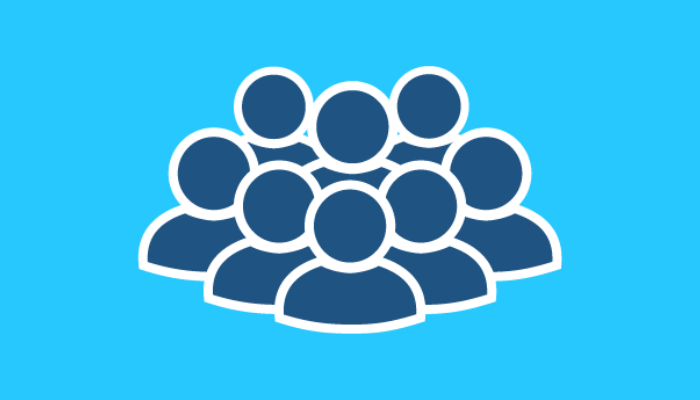FaCeT
NWA Futures
The Northwest Atlantic (NWA) is a dynamic and productive ecosystem and a global hotspot for marine species including sea turtles, sharks, and marine mammals. The NWA also provides important habitat for many commercially important highly migratory species such as swordfish and tunas.
Changing oceanographic conditions in the NWA are likely to have substantial ecological and economic impacts. Understanding both these changes and their potential effects on commercially important highly migratory species is one focus area of FaCeT's research.
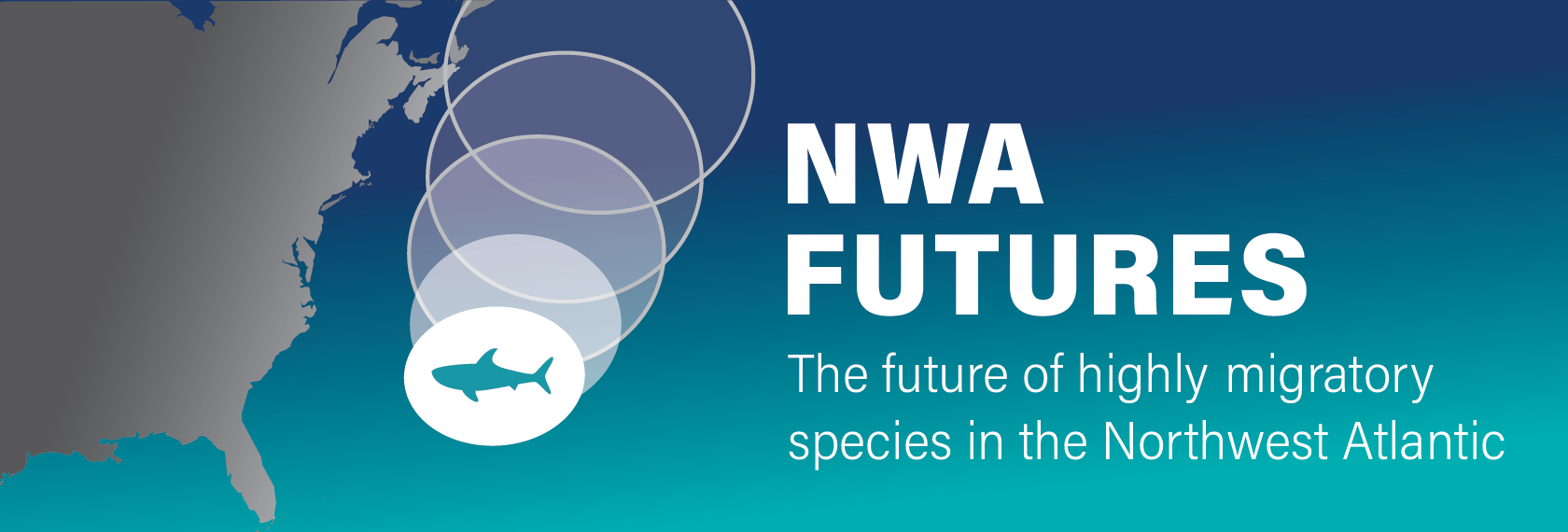
Changing Species Habitats and Distributions

Using historical data and downscaled global climate models from Alexander et al. (2020), FaCeT created regional models to predict how habitat suitability and distributions for six key fishery species in the NWA will respond to changing ocean conditions. Our model species include broadbill swordfish, yellowfin tuna, bigeye tuna, shortfin mako, blue shark, and bluefin tuna.
Winners and Losers
FaCeT's model results allow us to compare across both species and time to identify which species are likely to gain habitat or lose habitat as a function of expected climate change. These changes inform fishery management and conservation efforts.
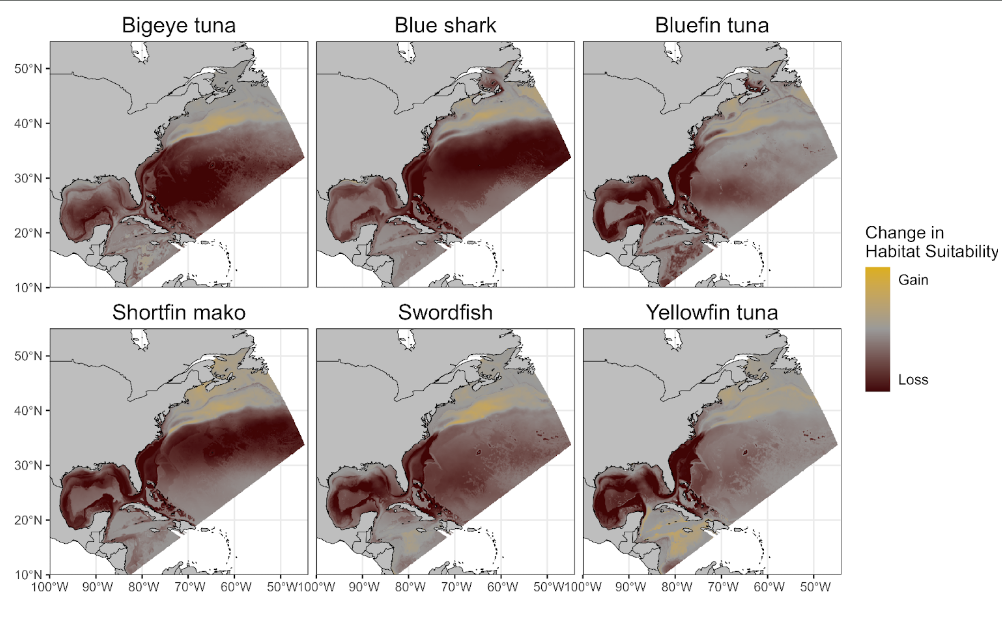 Open the image full screen.
Open the image full screen.Lessons learned
How NWA species will be impacted by climate change
The NWA, like many other biodiverse and productive ocean areas, is already experiencing climate change impacts. Using climate and species distribution models, our results suggest that overall habitat area for all six key fishery species may decrease by varying amounts in the coming decades. None of the model species are predicted to gain habitat area, as has been shown in other systems such as the California Current.
Also, our models suggest distributions for all species studied here have already been significantly changed due to changing ocean conditions and this displacement will likely continue under future climate impacts. Together, these results help us quantify and monitor these changes so we can adapt our fishery management approaches to advance climate resilience and readiness.
For more information on model methods and results, visit Braun et al. (2023).
Habitat gained and lost
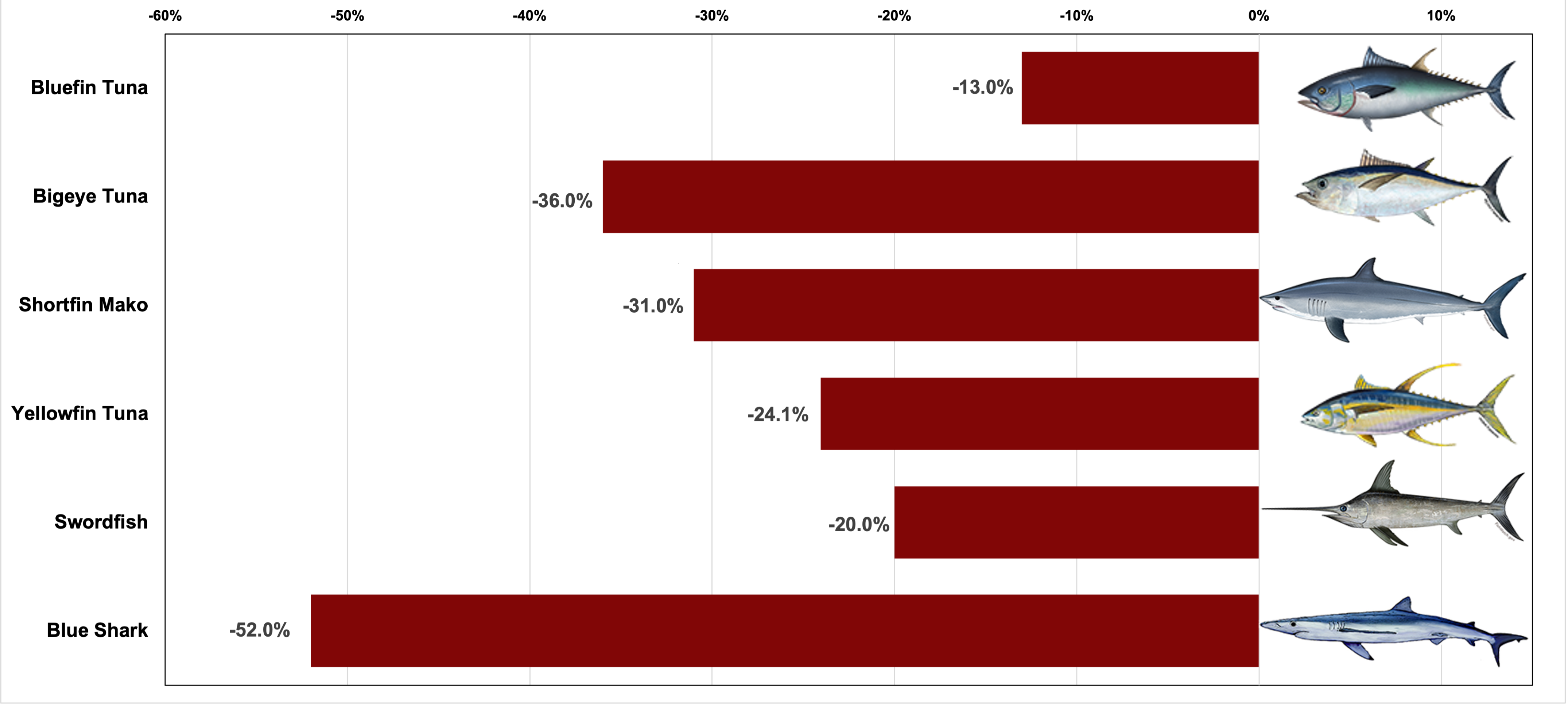 Open the image full screen.
Open the image full screen.
Northward displacement
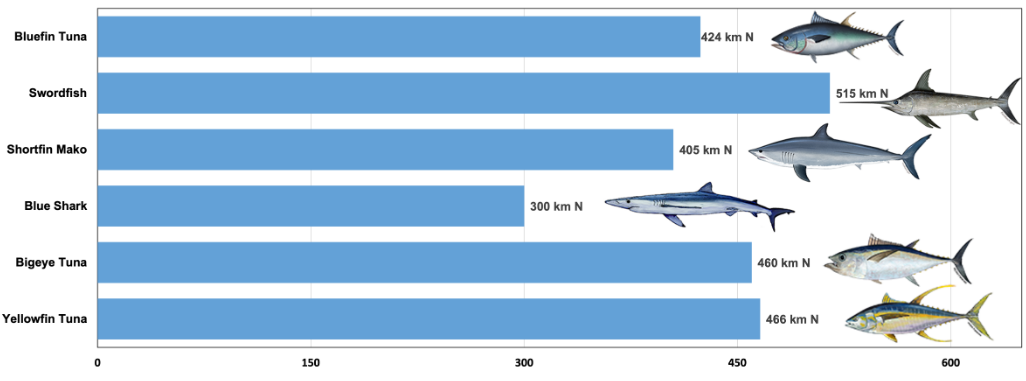 Open the image full screen.
Open the image full screen.Explore the Data




